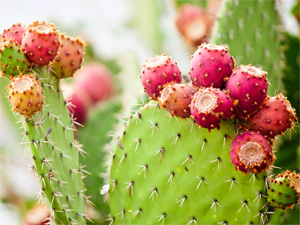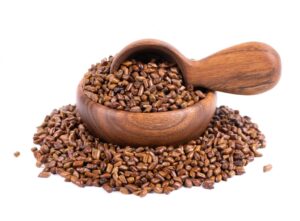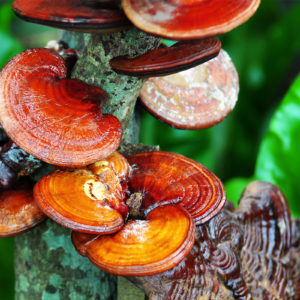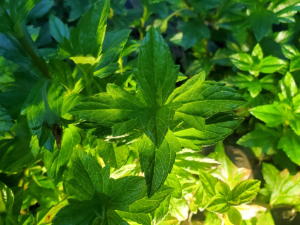Cactus/Cactus Fruit
Cactus is an amazingly strong plant that can survive in the harsh desert. The Mexican people view it as beautiful symbol of life and hope, and they use it widely for food and medicine. Cactus is also highly regarded in traditional Chinese medicine (TCM). Written during the Qing Dynasty, Beng Cao Gang Mu Shi Yi (A Supplement to the Compendium of Materia Medica) recorded that cactus has a mild taste and is cold in nature, can promote the flow of qi (vital energy) and blood circulation, is cooling and detoxifying, can reduce swelling and relieve pain, strengthens the spleen and stops diarrhea, is soothing and a diuretic, and can be used both externally and internally to treat many diseases. Moreover, it is low in calories and sodium. The excellent nutritional value of cactus is recognized across different cultures around the world.
The cactus fruit has a prickly exterior. Apart from its rarity, the cactus fruit is difficult to harvest and requires a long growing period. Like the cactus, the cactus fruit needs a minimum of four years to grow and ripen before its nutrients can be tapped.
Strenuous Harvesting Process
Cactus has a long history of use as an ornamental plant and as food. Despite its prickly exterior, cactus has soft and succulent flesh and is very rich in phytochemicals and minerals.
It is very important to choose the right species and right parts of the cactus. Within the thick, waxy cuticle of the cactus stem, for example, there is a thick membrane that helps prevent water loss from the cactus. Consuming this membrane in large amounts produces a laxative effect. Once cactus gel has been isolated from the interior of the cactus, it must be filtered to remove the seeds and cellulose and then processed into liquid form. Upon removal, the gel of the cactus oxidizes rapidly. Therefore, processing must take place immediately after the gel has been extracted from the cactus to produce the purest and most delicious extract possible.
Even the harvesting hour can be critical. Research shows that it is best to harvest cactus pads earlier in the day because the acidity is the lowest at that time, which is better for health. During processing, it is best to avoid overheating cactus. Excessive heat may reduce nutrient content and degrade fiber content.
Ample knowledge and skilled technique are needed to process cactus through a series of complex steps before it can be eaten. Plus, it has to be done quickly and carefully to maintain optimal nutritional value. After removing the spines and skin, the cactus gel has to be quickly filtered to remove unwanted substances. The cactus gel has to further undergo particle filtration, microfiltration, and ultrafiltration before it is clean, pure, concentrated, and easily absorbed by the human body.
Excellent Nutritional Value
Cactus extract is rich in nutrients such as beta-carotene, vitamin C, potassium, magnesium, calcium, and iron. It is also abundant in phytochemicals, antioxidants, and polysaccharides.
Cactus has high levels of amino acids, including proline and taurine. Prior to 2000, when taurine was found to be in cactus, it had not been discovered in any other plants! Cactus also contains essential amino acids not manufactured by the human body: histidine, isoleucine, leucine, lysine, methionine, phenylalanine, threonine, and valine. The amino acids aid in multiple chemical reactions in the body. It is rare that a plant contains as many amino acids as cactus.
| Phytochemicals, Antioxidants, and Polysaccharides in Cactus |
| (+)-dihydroquercetin Betacyanin Beta-sitosterol Betaxanthin Cactus mucilage Carotenoids Isorhamnetin Kaempferol Luteolin Pectic polysaccharides Penduletin Piscidic acid Polyphenolics Quercetin Quercetin 3-methyl ether Rutin |
Potent Antioxidant and Toxicity Reducer
Research indicates that the high levels of nutrients and antioxidants in cactus and cactus fruit can help prevent DNA damage, and effectively inhibit and fight against free radical formation. For example, cactus is abundant in flavonoids, group of phytochemicals that can help protect neurons against oxidative injury. Beta-carotene contributes to the high antioxidant activity in cactus. The antioxidant activity of cactus fruit is said to be seven times more powerful than that of vitamin C!
Cactus extract reduces oxidative damage and liver and kidney toxicity that occur as a result of zearalenone, a toxin that occurs in high levels in many foodstuffs such as crops and vegetable oils. In one study, supplementing with 500 g of cactus fruit daily for two weeks improved the oxidative stress status of healthy humans.
Cancer Fighter
Phytochemicals in cactus protect the plant from UV damage and ensure its survival. These same phytochemicals are also highly beneficial to the human body because they help inhibit different tumor formation processes and nourish the immune system to prevent disease. Antioxidants in cactus can inhibit the formation of free radicals and enhance phagocytic activity. Polysaccharides can boost immunity, increase NK cell activity, and inhibit tumor formation. Polysaccharides in cactus include cactus mucilage and pectic polysaccharides (e.g., rhamnogalacturonan-I).
Research shows that cactus extract can increase immune efficiency in fighting the cancer-causing Epstein-Barr virus (EBV). Cactus juice can increase NK cell activity to stop one or more of the mechanisms that lead to tumor development. One group of phytochemicals, called flavonoids, is abundant in cactus and has powerful antioxidant, anti-inflammatory, and antiviral properties. They prevent cancer-causing hormones from attaching to normal cells and inhibit enzymes responsible for cancer cell metastasis.
Experimental studies showed that animals fed with cactus extract had increased immunity against tumor formation and EBV.
Cardiovascular Health Benefits
Found in cactus, proline and taurine, are of particular interest. Proline aids in collagen formation, atherosclerosis prevention, and tissue repair. Taurine helps to combat heart disease, protect against diabetes, lower high blood pressure, and decrease anxiety.
Furthermore, cactus extract helps to decrease cholesterol and triglyceride levels, reduce low-density lipoprotein (“bad” cholesterol), prevent high blood sugar levels, stabilize diabetics’ blood sugar levels (for example, by lowering the blood sugar levels in type 2 diabetes patients), and promote cardiovascular health.
A study conducted in a Mexican hospital showed that cactus might lower the glucose level of diabetics by as much as 19.8%. In another study, the researchers concluded that blood sugar in diabetics can be controlled by using cactus daily with a dosage of 1 mg/kg body weight.
Inflammation Inhibitor
Cactus contains beta-sitosterol, an anti- inflammatory phytochemical that aids in wound healing. Scientists tested topical application that consisted of 15% cactus extract and found that phytochemicals in cactus accelerated tissue regeneration by inhibiting inflammation, stimulating the creation of new blood vessels, and stimulating fibroblasts (cells that aid in wound healing) to move to the wound area and speed up collagen formation. Cactus mucilage (the sticky juice that oozes out when cactus is sliced) contributes to wound healing and immune system regulation by modulating the functions of macrophages (multitasking immune cells).
In experimental studies, cactus extract was able to significantly inhibit arthritic inflammation through its anti-inflammatory qualities.
Protection for the Stomach and Gastrointestinal Tract
Pectin in cactus coats the stomach and gastrointestinal tract, thereby helping to provide relief from digestive problems.
Skin Improvement
Cactus is not only regarded as one of the most perfect foods in nature, but it also plays a significant role in skin protection. Research shows that when applied to skin, cactus extract acts as moisturizer and helps prevent water evaporation from the stratum corneum layer, thereby improving the skin’ s barrier function. In addition, phytochemicals in cactus help to speed up collagen formation.
Cactus fruit is high in vitamins A, B1, B12, D3, and riboflavin. The fruit can help to promote skin repair and regeneration, soften the skin, and significantly improve the skin’s condition and appearance.




